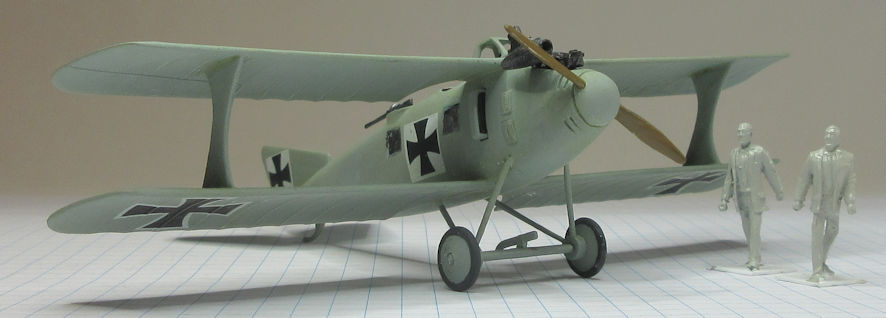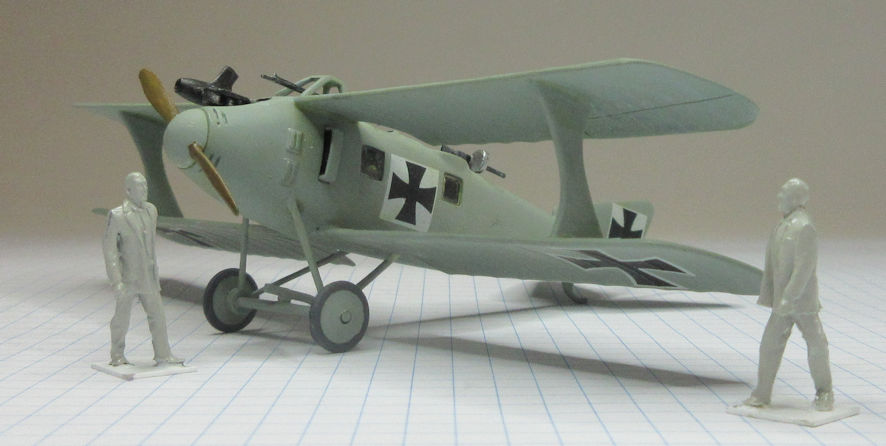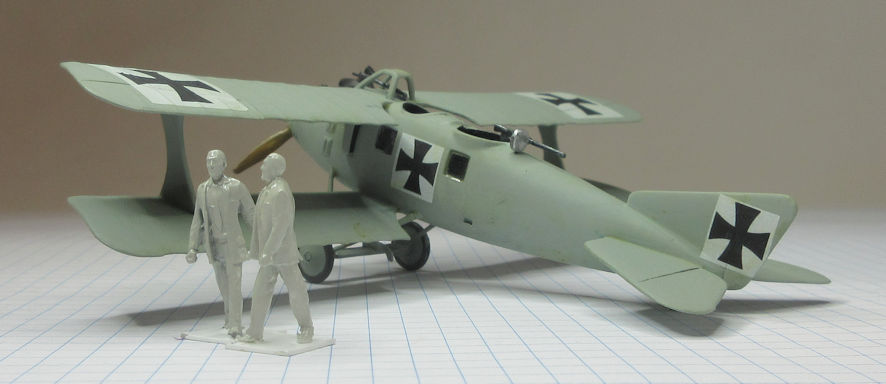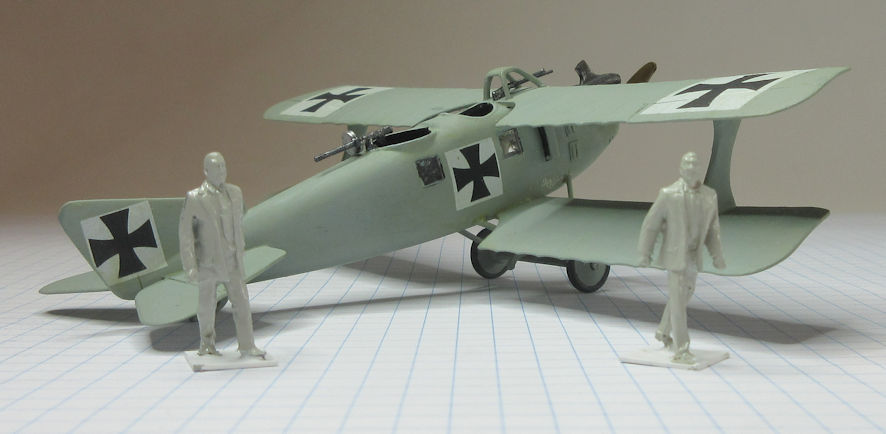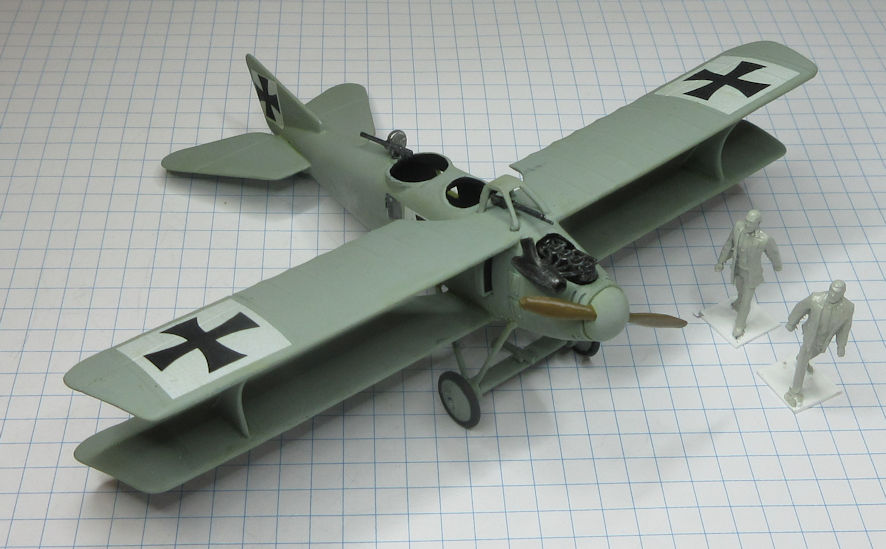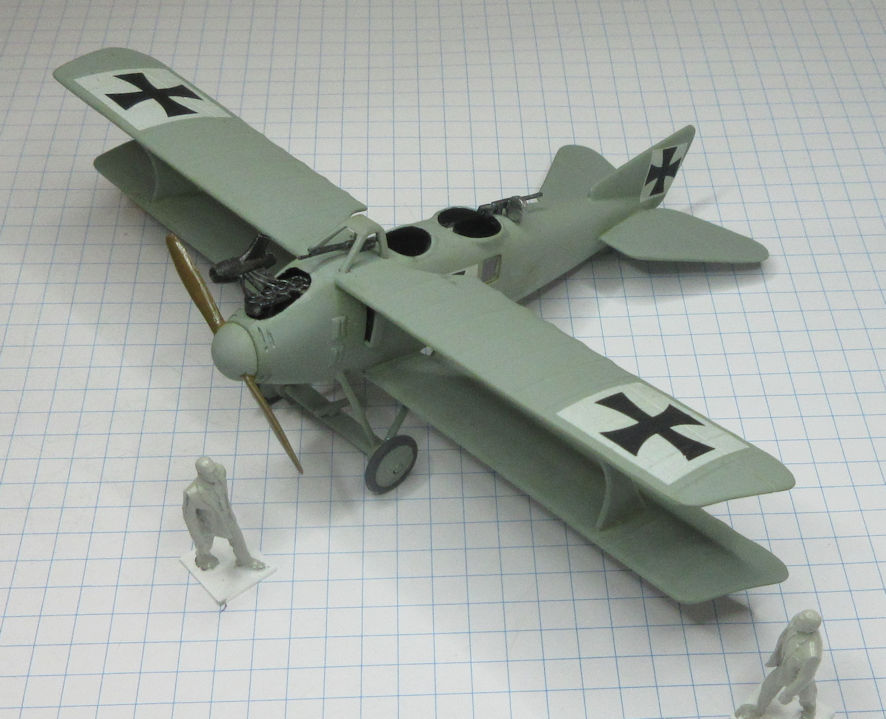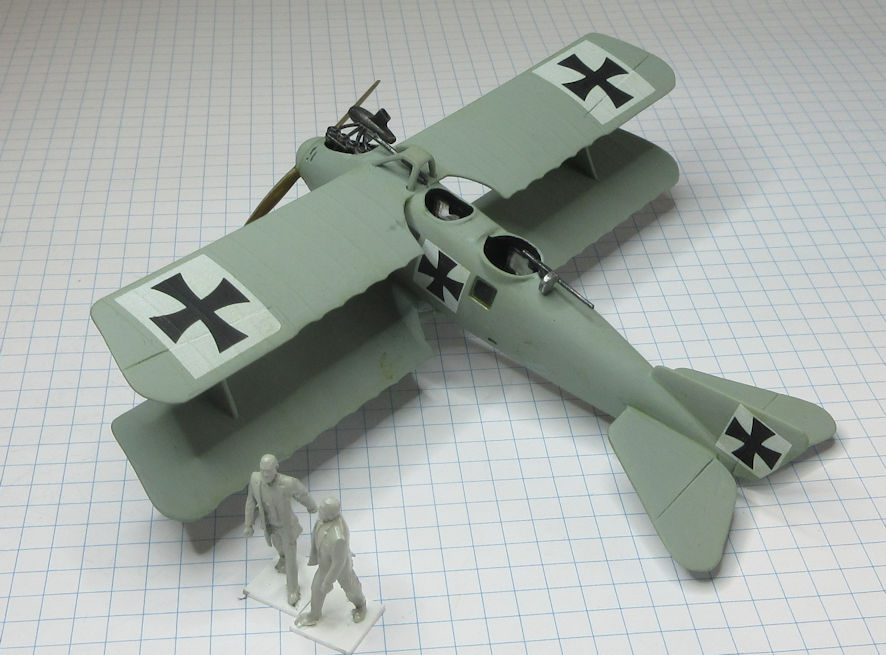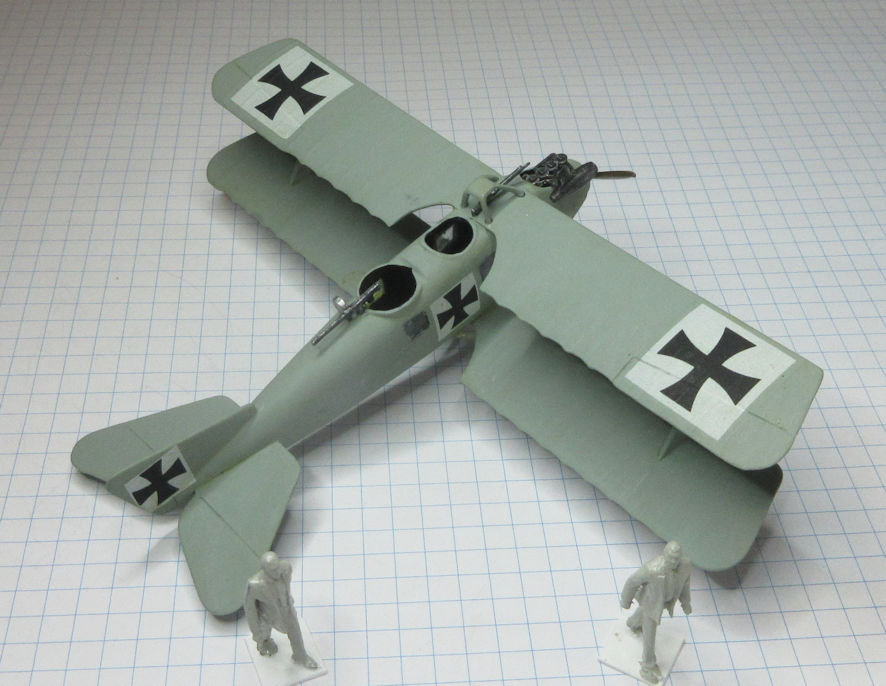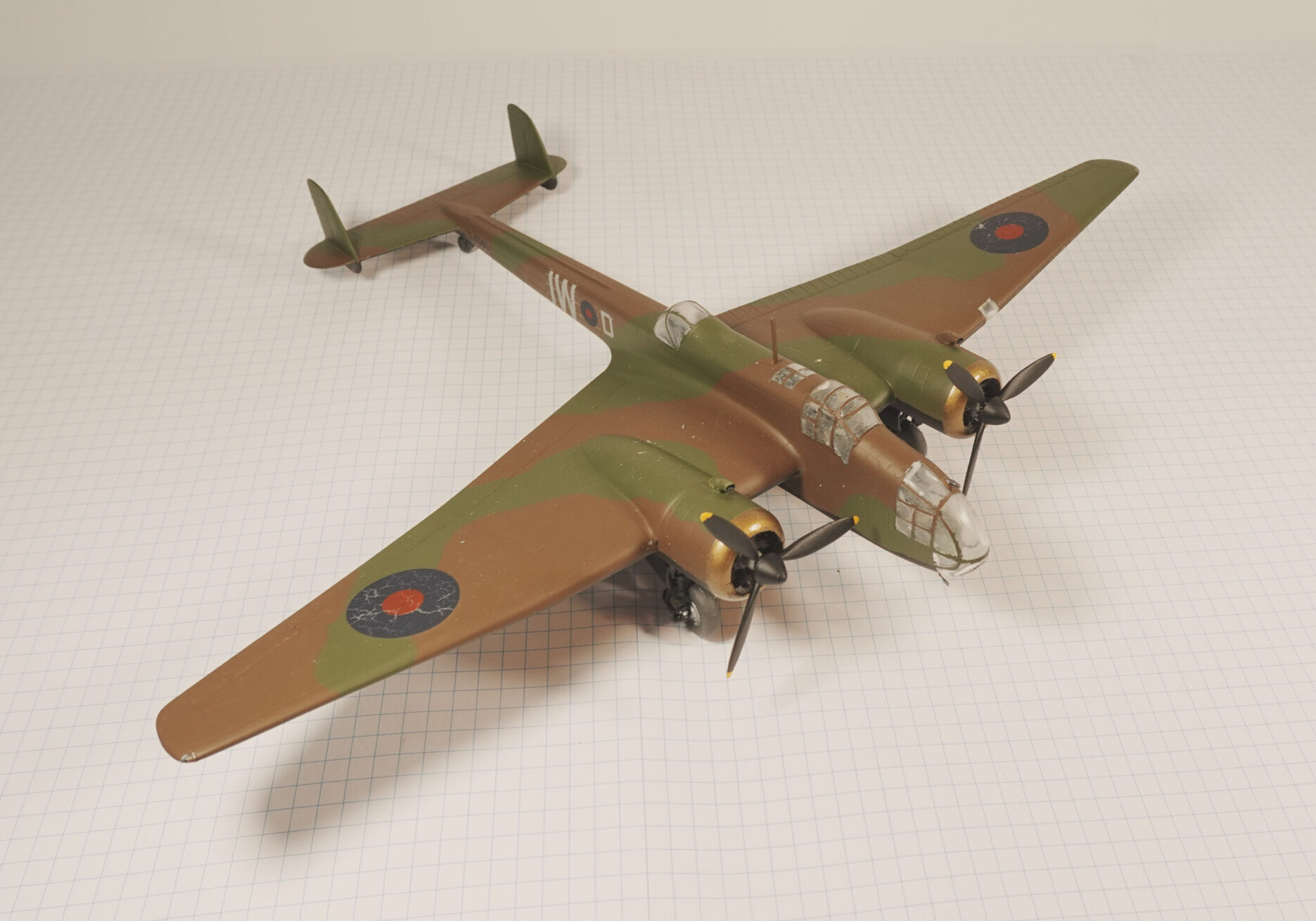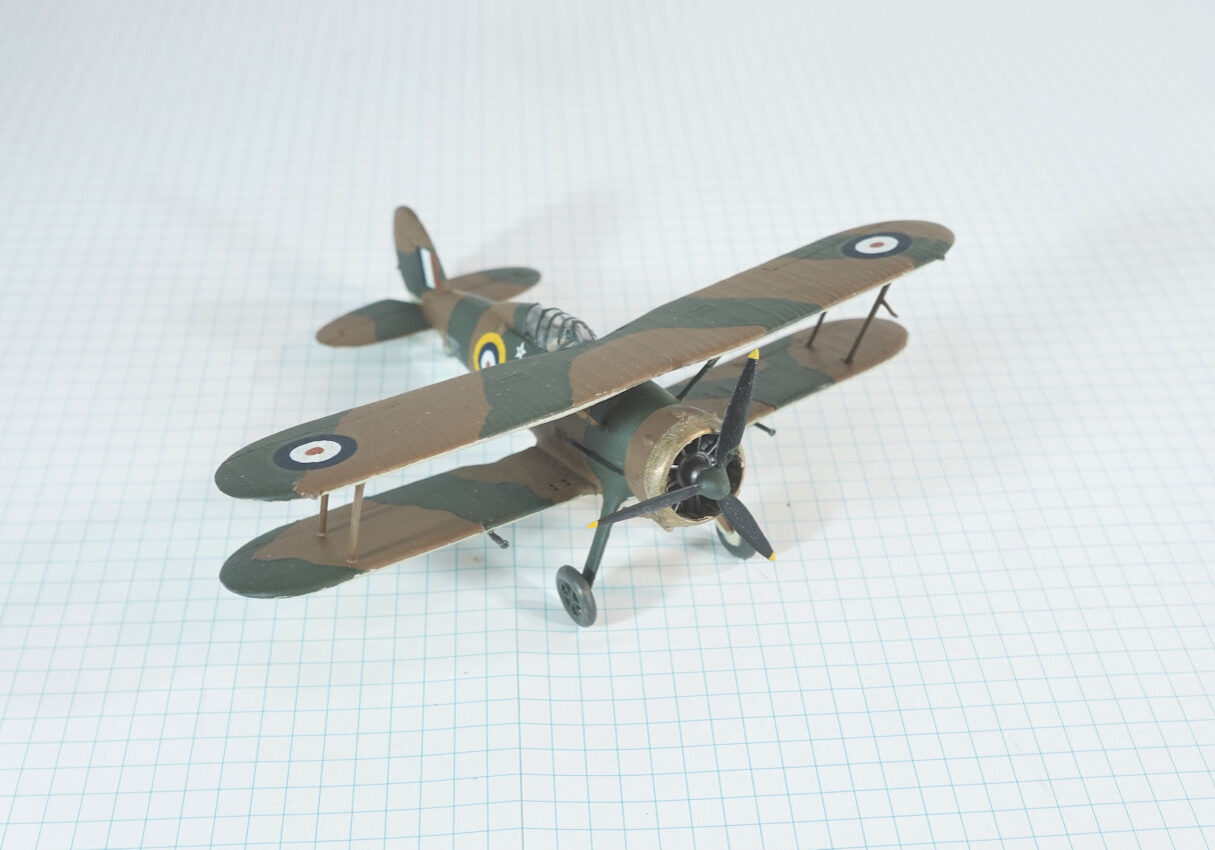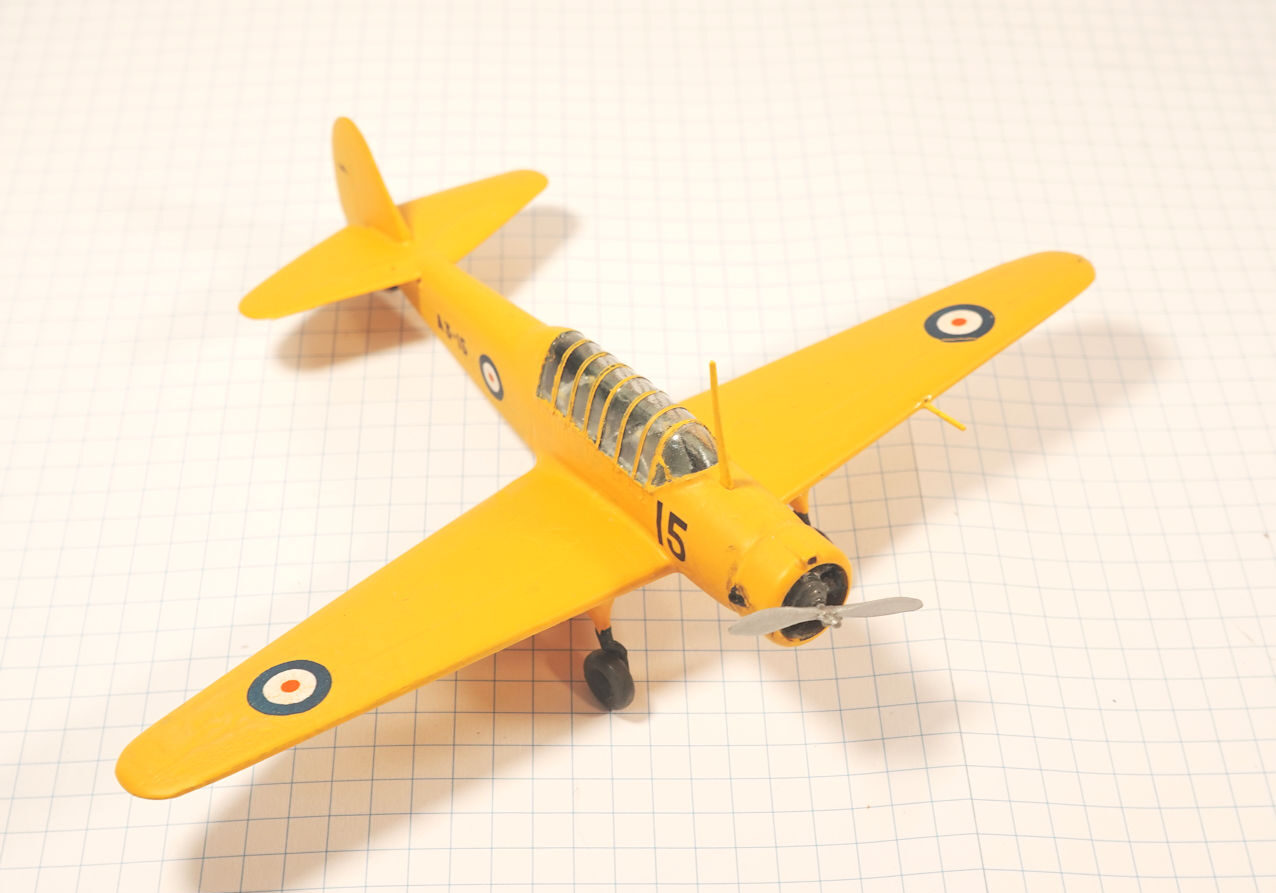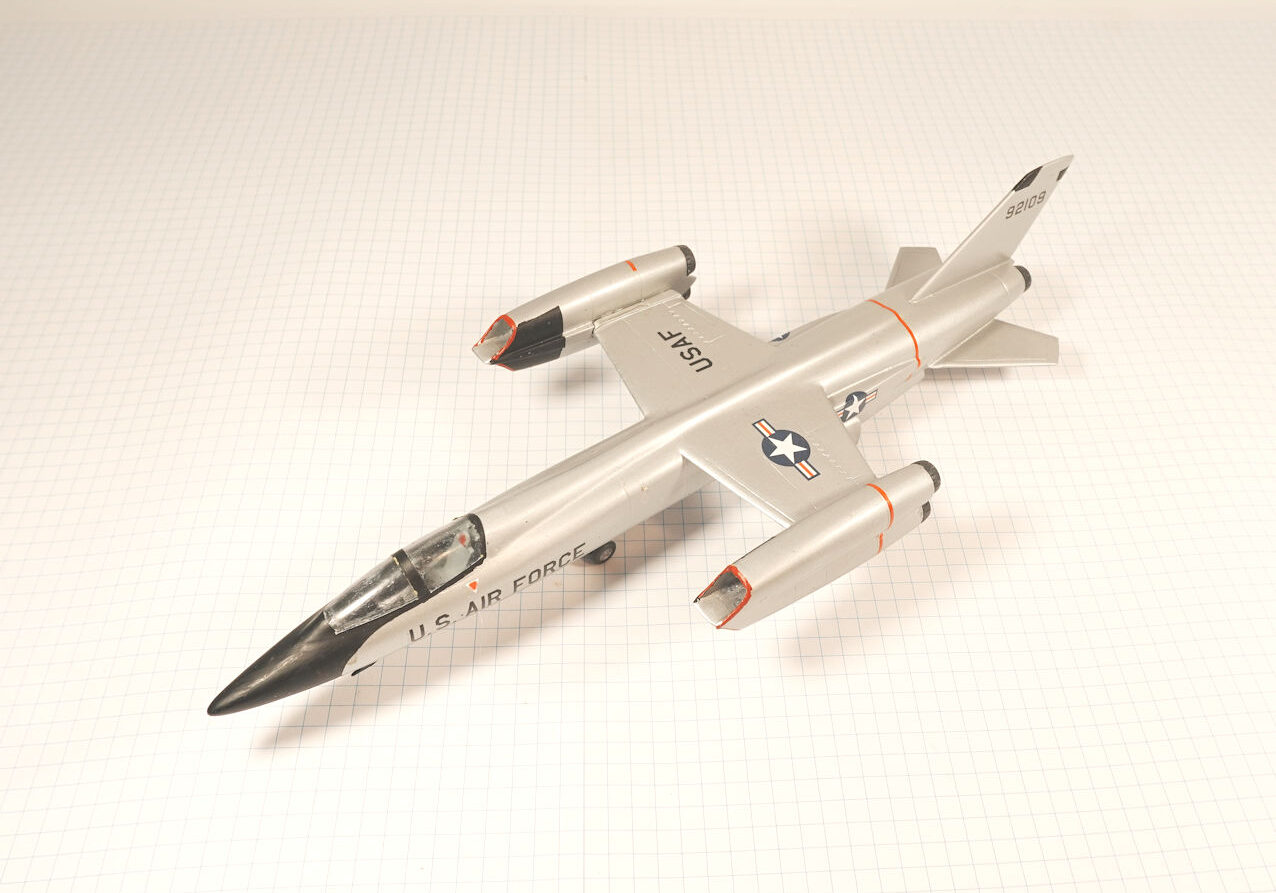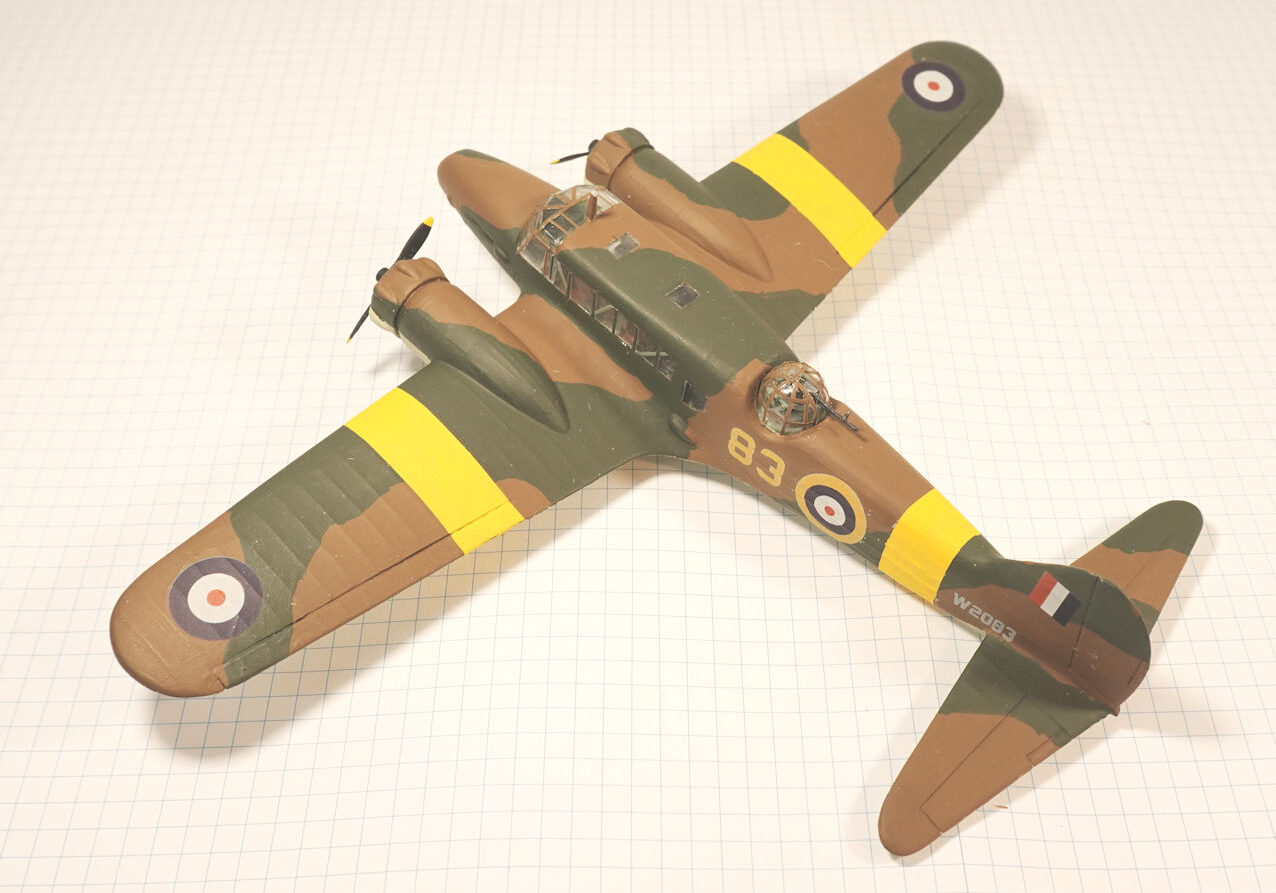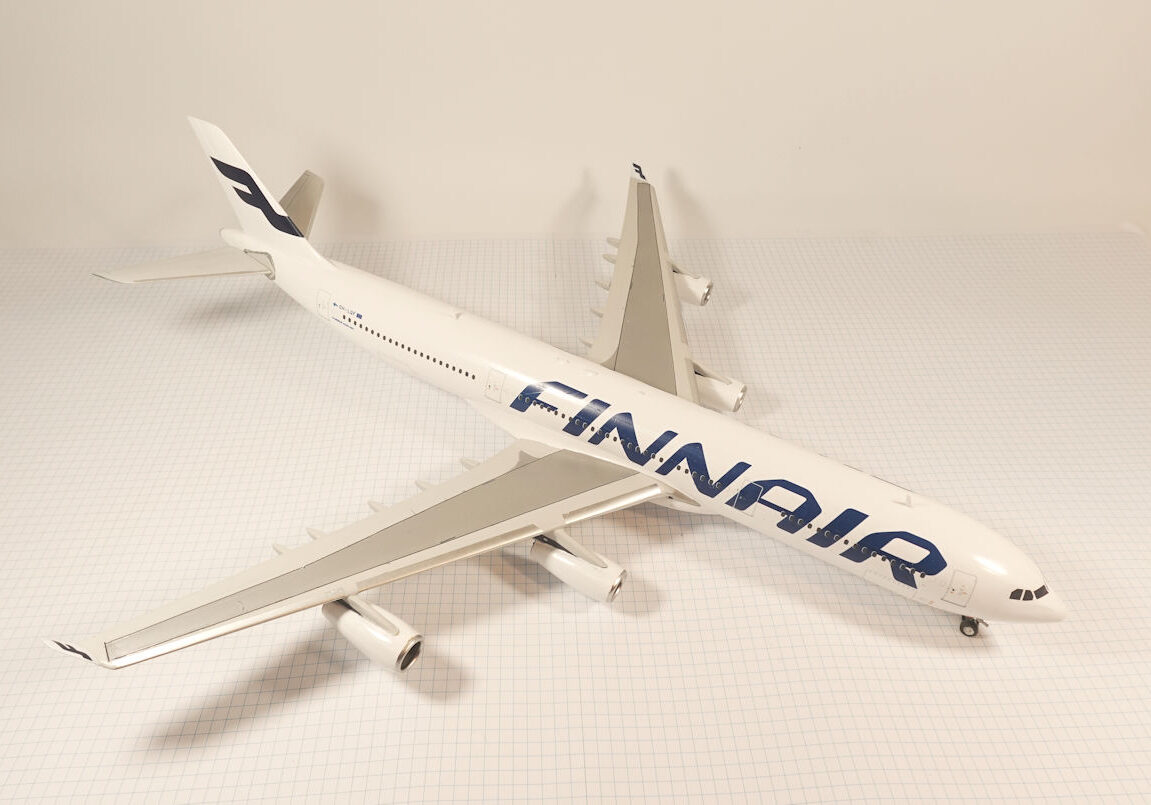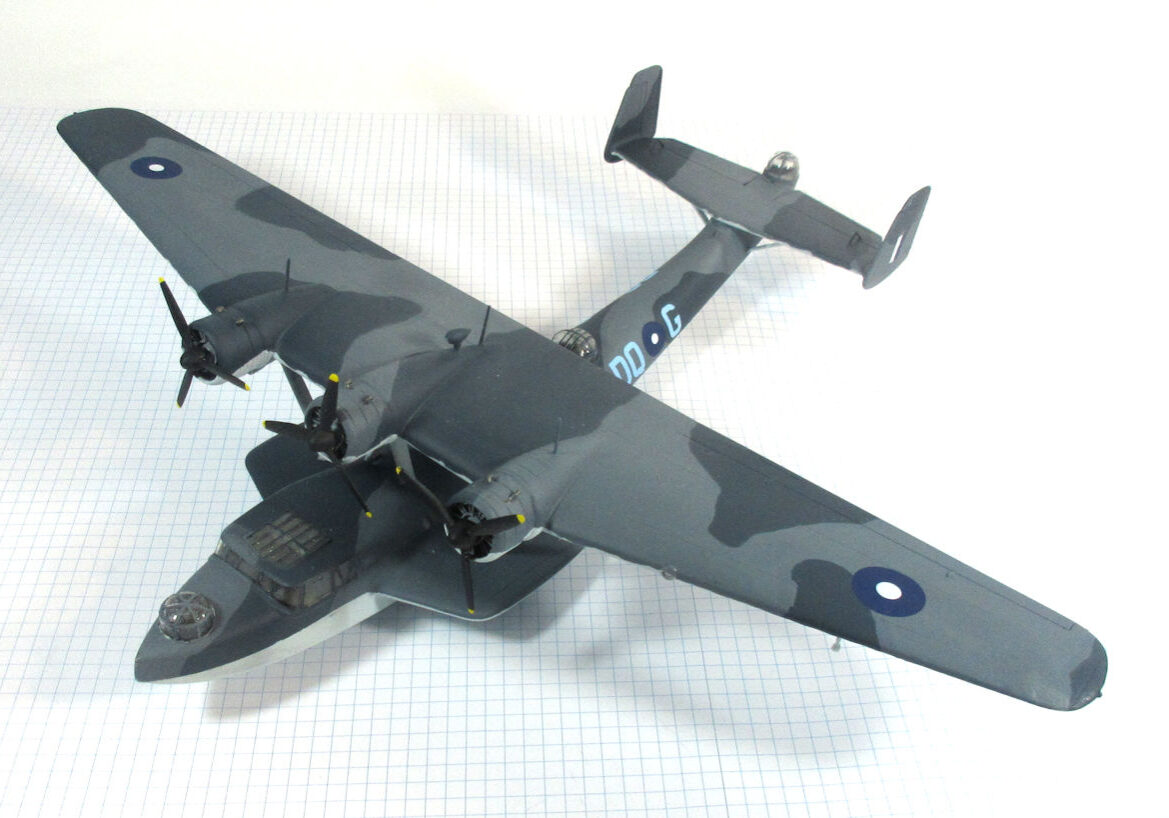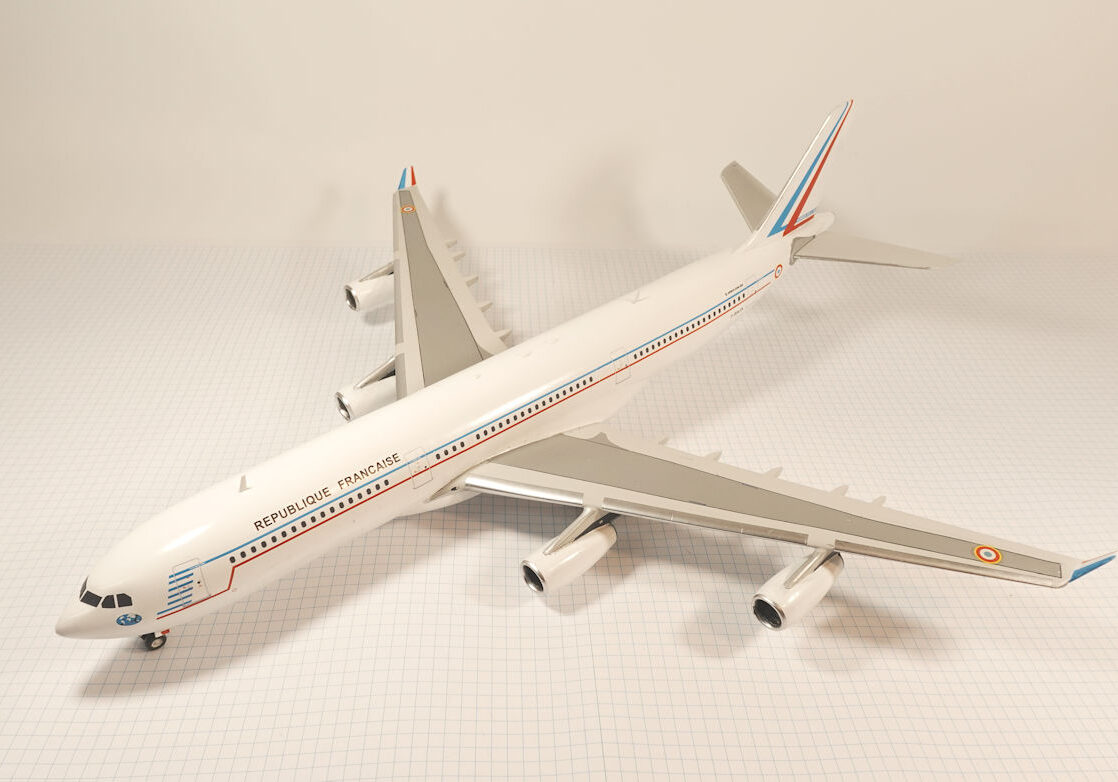History
The Roland C.II was one of the most streamlines aeroplanes of World War I. Despite its appearance it was a difficult aeroplane to fly and did not survive long in German front line service.
The Roland company began the war building aeroplanes designed by other companies under licence. Engineers thought it should be possible to design stronger and more streamlined aeroplanes to reduce the heavy drag of existing designs and the C.II was the result.
The unique fuselage was made of layers of plywood and rigging wires were kept to a minimum to reduce drag.
In all about 300 were built and although they could be very effective in the hands of an experienced pilot they were a handful for new pilots while they allowed only limited visibility for the aircrew.
After front line service in 1916 and 1917 they were used as trainers for the rest of the war.
This model represents a standard C.II.
Heller 1/72 kit.
